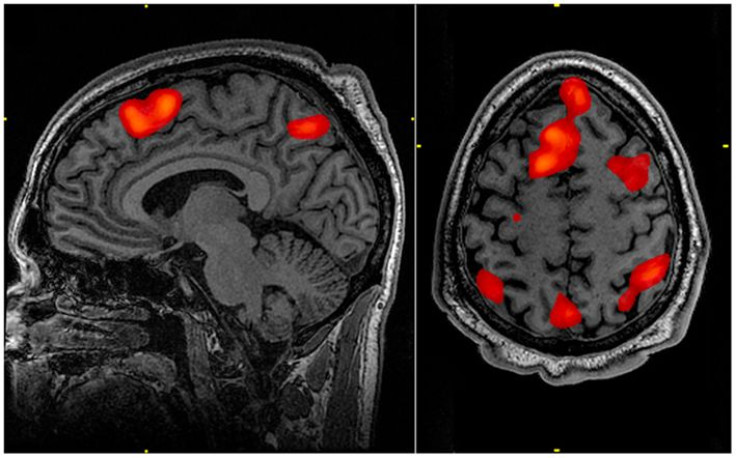Words And Metaphor Real To Human Brain, Researchers Say

Word and metaphor exist as reality under the scope of functional magenetic resonance imaging (fMRI), giving new meaning to how the brain sees everything from Baudelaire to flying pigs, researchers say.
Just a few decades ago in the Dark Ages of neuroscience, researchers thought the human brain had evolved a distinct language module, given the relative silence among other species within the animal kingdom. But with the emergence of functional brain mapping tools, researchers peering within the brain noticed a dispersion of language functionality throughout the brain, rather than clustered into one center unique to our species.
Benjamin Bergen, a researcher at the University of California, San Diego, discussed his new book, Louder Than Words, with media this week. The researchers "found something totally suprising," he said. "It's not just certain specific little regions in the brain, regions dedicated to language, that were lighting up. It was kind of a whole-brain process."
By reading a sentence such as, "the shortstop threw the ball to first base," researchers saw areas of the brain dedicated to vision and movement lighting up under the scope. "The question was, 'why?'" Bergen said. "They're just listening to language. Why would they be preparing to act? Why would they be thinking that they were seeeing something?"
In encountering words and other abstractions, the brain recreated the experience along the lines of pre-existing associations.
"The way that you understand an action is by recreating in your motor system what it would be like to be that shortstop, to have the ball in your hand and release it," Bergen said.
Bergen cited the example of a flying pig, something most of us know to exist metaphorically but not in reality. "A flying pig isn't something that exists in the real world," Bergen said. "Yet, when we read those words, we see one in our mind's eye." Most people see a pig with wings above its shoulders, but others see one wearing a cape, flying like Superman, he said.
Bergen said it makes sense that the brain wouldn't evolve separate mechanisms for metaphor, as we use such language all of the time to describe our realities. "What we actually say when we talk about meaning is, 'Do you see what I mean? Is my point crystal clear? Maybe, let's shed a little light on the subject.'"
Bergen and others say the human brain has assembled its mostly unique language capability essentially from "spare parts," overlaying the functionality throughout brain systems found in other primates, including non-human apes and monkeys. "What evolution has done is to build a new machine, a capacity for language, something that nothing else in the known universe can do," Bergen said. "And it's done so using spare parts it had lying around from the old primate brain."
On some level in our minds, whether it's reading classic French literature or imagining farm animals with wings — it's real.



























